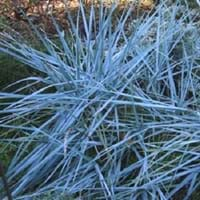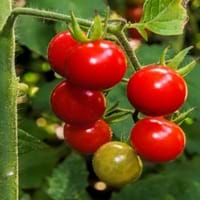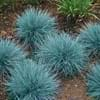Life Span
Perennial
Annual
Origin
Europe, Western Asia
Mexico, Central America, South America
Types
Blue Dune Lyme Grass
Red, Yellow and Baby Plum
Habitat
Clay soil areas, Loamy soils, Sandy areas, sandy seeps, Well Drained
Cultivated Beds
USDA Hardiness Zone
7-9
11-15
Sunset Zone
Not Available
A1, A2, A3, H1, H2, 1a, 1b, 2a, 2b, 3a, 3b, 4, 5, 6, 7, 8, 9, 10, 11, 12, 13, 14, 15, 16, 17, 18, 19, 20, 21, 22, 23, 24
Habit
Spreading
Upright/Erect
Flower Color
Creamy Yellow
Yellow
Flower Color Modifier
Bicolor
Bicolor
Fruit Color
Not Available
Red
Leaf Color in Spring
Blue Green, Gray Green
Green, Dark Green
Leaf Color in Summer
Light Green
Green, Dark Green
Leaf Color in Fall
Blue Green, Gray Green
Green, Dark Green
Leaf Color in Winter
Tan
Green, Dark Green
Leaf Shape
Grass like
Lanceolate
Plant Season
Summer, Fall, Winter
Spring, Summer, Fall
Sunlight
Full Sun, Partial Sun, Partial shade
Full Sun
Type of Soil
Clay, Loam, Sand
Loam, Sand
The pH of Soil
Acidic, Neutral, Alkaline
Neutral
Soil Drainage
Well drained
Well drained
Bloom Time
Early Summer, Summer
Indeterminate
Tolerances
Wet Site, Pollution, Drought, Soil Compaction
Drought
Where to Plant?
Container, Ground, Pot
Container, Ground, Pot
How to Plant?
Root Division, Rooted stem cutting, Seedlings
Seedlings
Plant Maintenance
Medium
Medium
Watering Requirements
Average Water Needs, occasional watering once established
Requires regular watering
In Summer
Lots of watering
Lots of watering
In Spring
Moderate
Moderate
In Winter
Average Water
Average Water
Soil pH
Acidic, Neutral, Alkaline
Neutral
Soil Type
Clay, Loam, Sand
Loam, Sand
Soil Drainage Capacity
Well drained
Well drained
Sun Exposure
Full Sun, Partial Sun, Partial shade
Full Sun
Pruning
No pruning needed in the early stages, Prune grass to maintain level
Dispose of diseased portions, Remove dead leaves
Fertilizers
All-Purpose Liquid Fertilizer, fertilize in spring
organic fertlizers
Pests and Diseases
Red blotch
fungus
Plant Tolerance
Drought, Pollution, Soil Compaction, Wet Site
Heat Tolerance
Flowers
Insignificant
Showy
Flower Petal Number
Single
Single
Fragrant Bark/Stem
No
Yes
Foliage Texture
Coarse
Medium
Foliage Sheen
Matte
Matte
Attracts
Butterflies
Butterflies
Allergy
Pollen
Diarrhea, gastro-intestinal problems, Headache, Itchiness, Vomiting
Aesthetic Uses
Ground Cover, Landscape Designing
As decorated salad
Beauty Benefits
Not Available
Acne, Glowing Skin, Maintains teeth healthy
Edible Uses
Insignificant
Yes
Environmental Uses
Air purification, soil erosion prevension on hill slopes, soil stabilisation
Air purification
Medicinal Uses
Not Available
Antioxidants, Metabolism
Part of Plant Used
Stem
Fruits
Other Uses
Used as Ornamental plant
Cosmetics, Culinary use, For making oil, Repellent
Used As Indoor Plant
No
Yes
Used As Outdoor Plant
Yes
Yes
Garden Design
Dried Flower/Everlasting, Groundcover
Container, Edible, Herb, Vegetable, Houseplant
Botanical Name
ELYMUS glaucus
LYCOPERSICON esculentum 'Tiny Tim'
Common Name
Blue Lyme Grass, Blue Wildrye
Cherry Tomato
In Hindi
Blue Lyme Grass
चेरी टमाटर
In German
Blau Lyme Grass
Kirschtomate
In French
Bleu Lyme Herbe
Tomate cerise
In Spanish
Azul hierba de Lyme
Tomate cherry
In Greek
Μπλε Lyme Grass
Ντοματάκι
In Portuguese
Azul Lyme grama
Tomate cereja
In Polish
Niebieska Trawa Lyme
Pomidor wiśniowy
In Latin
Blue Lyme Grass
Cherry LycopersiciSusceptibility
Phylum
Magnoliophyta
Magnoliophyta
Class
Liliopsida
Magnoliopsida
Order
Cyperales
Solanales
Family
Poaceae
Solanaceae
Clade
Angiosperms, Commelinids, Monocots
Angiosperms, Asterids, Eudicots
Subfamily
Pooideae
Solanoideae
Number of Species
Not Available
Not Available
Importance of Blue Lyme Grass and Cherry Tomato
Want to have the most appropriate plant for your garden? You might want to know the importance of Blue Lyme Grass and Cherry Tomato. Basically, these two plants vary in many aspects. Compare Blue Lyme Grass and Cherry Tomato as they differ in many characteristics such as their life, care, benefits, facts, etc. Every gardener must at least have the slightest clue about the plants he wants to plant in his garden. Compare their benefits, which differ in many ways like facts and uses. The medicinal use of Blue Lyme Grass is Not Available whereas of Cherry Tomato is Antioxidants and Metabolism. Blue Lyme Grass has beauty benefits as follows: Not Available while Cherry Tomato has beauty benefits as follows: Not Available.
Compare Facts of Blue Lyme Grass vs Cherry Tomato
How to choose the best garden plant for your garden depending upon its facts? Here garden plant comparison will help you to solve this query. Compare the facts of Blue Lyme Grass vs Cherry Tomato and know which one to choose. As garden plants have benefits and other uses, allergy is also a major drawback of plants for some people. Allergic reactions of Blue Lyme Grass are Pollen whereas of Cherry Tomato have Diarrhea, gastro-intestinal problems, Headache, Itchiness and Vomiting respectively. Having a fruit bearing plant in your garden can be a plus point of your garden. Blue Lyme Grass has no showy fruits and Cherry Tomato has showy fruits. Also Blue Lyme Grass is not flowering and Cherry Tomato is not flowering . You can compare Blue Lyme Grass and Cherry Tomato facts and facts of other plants too.





